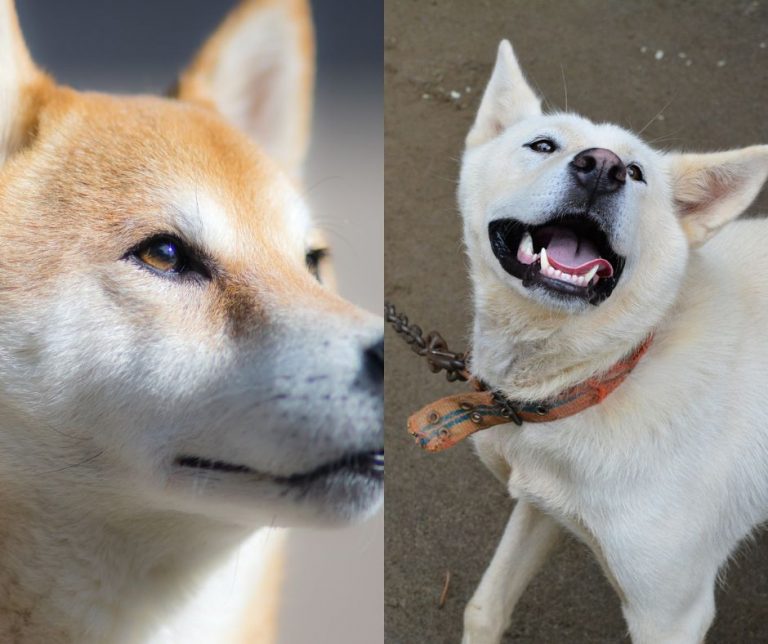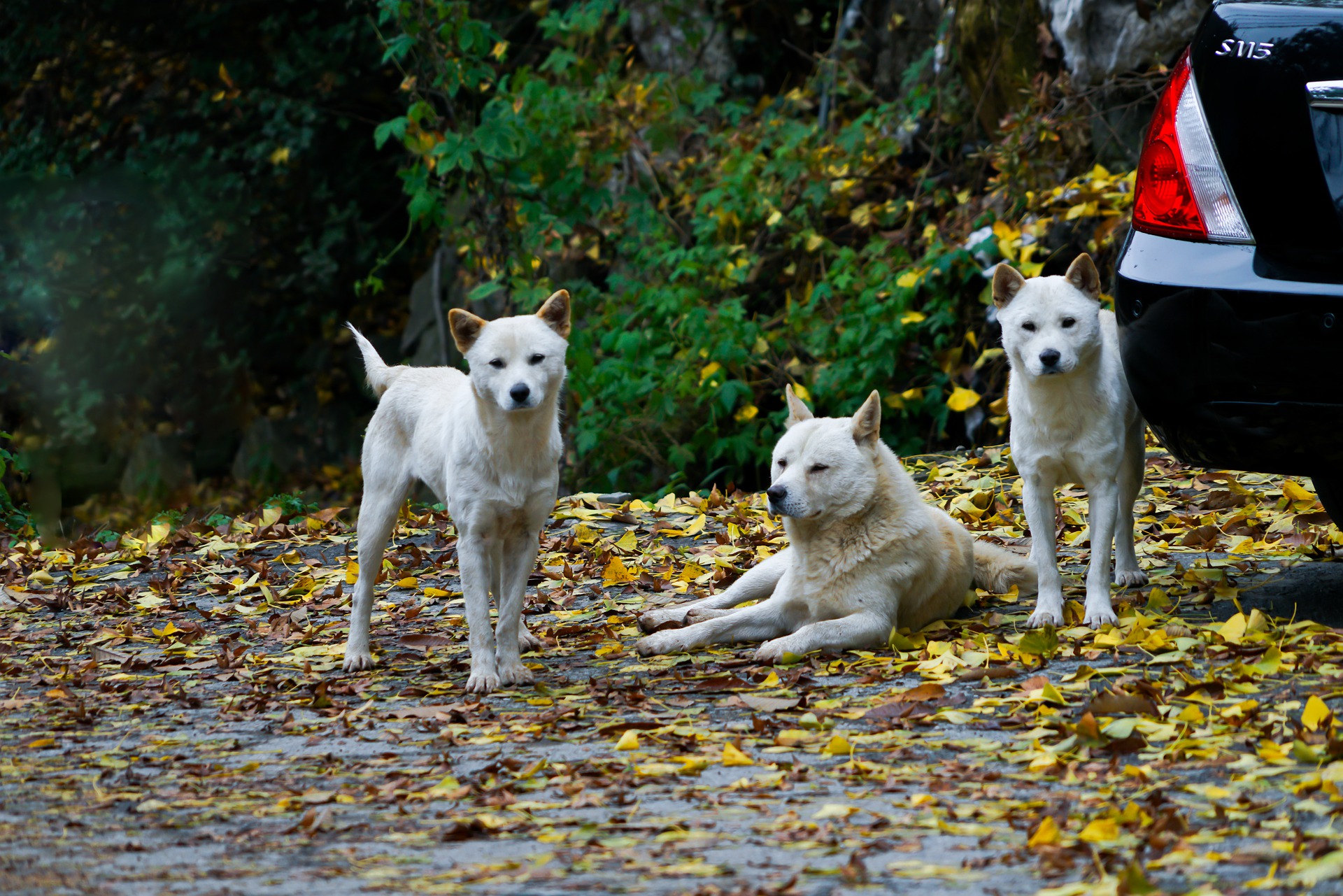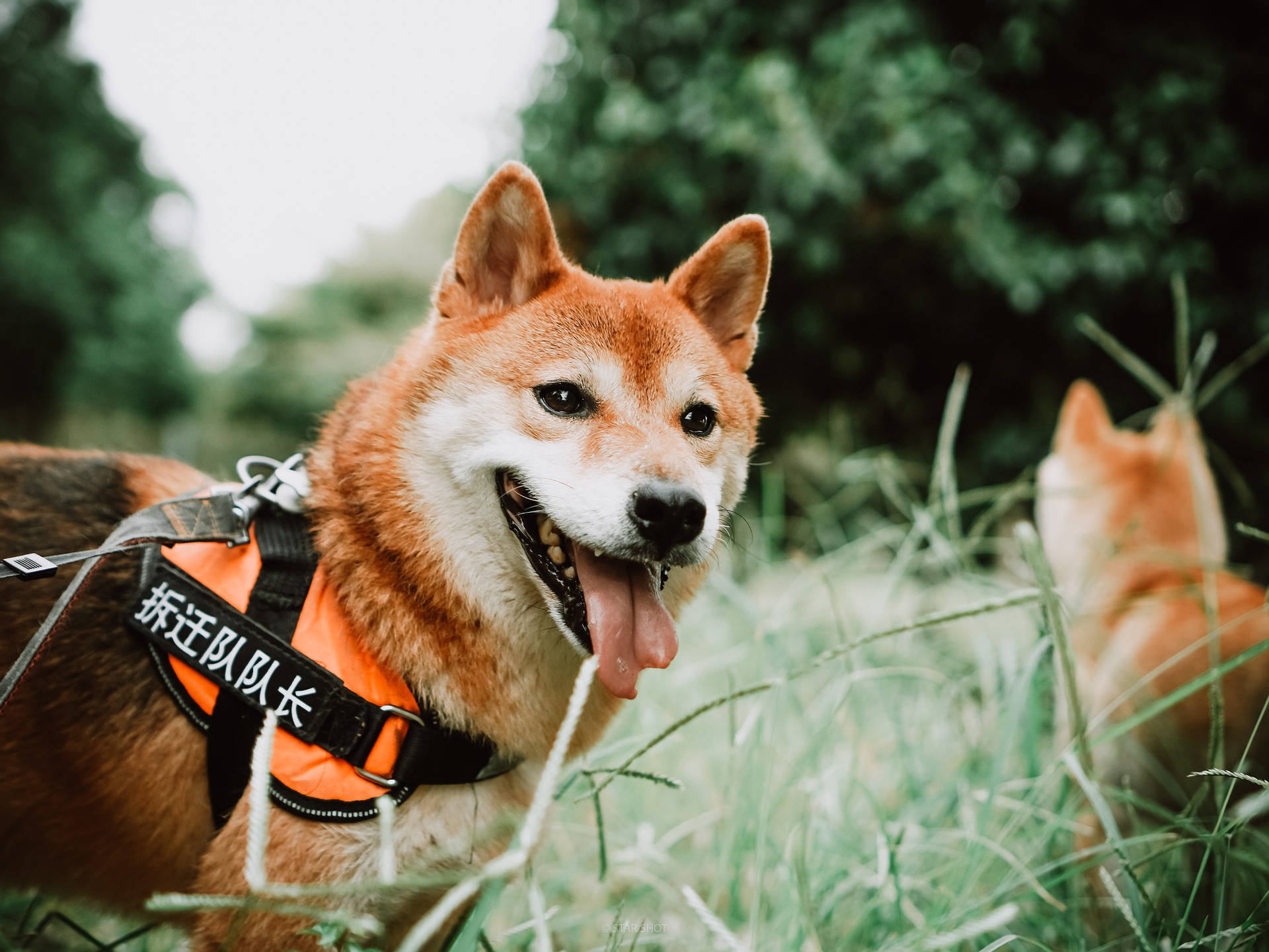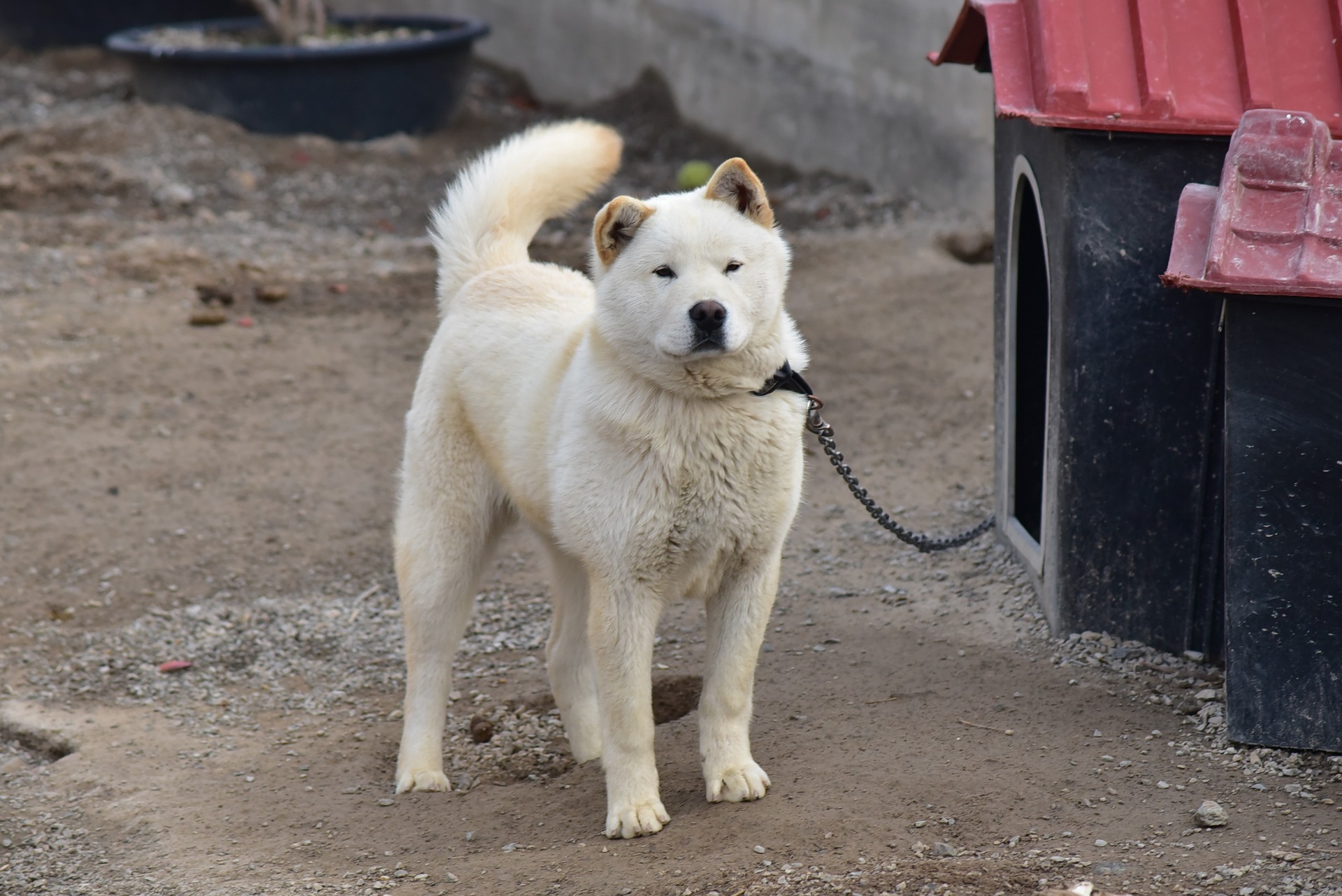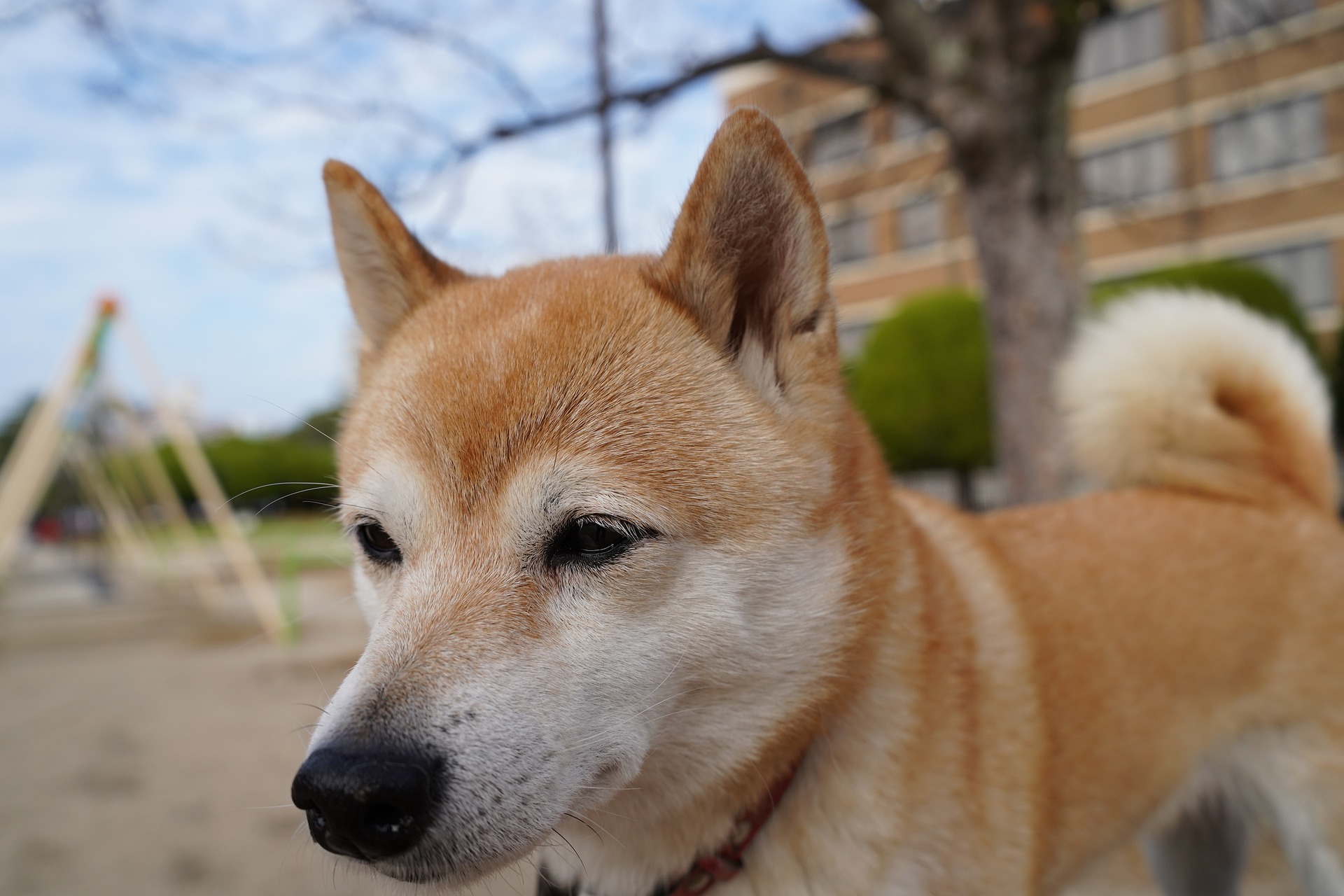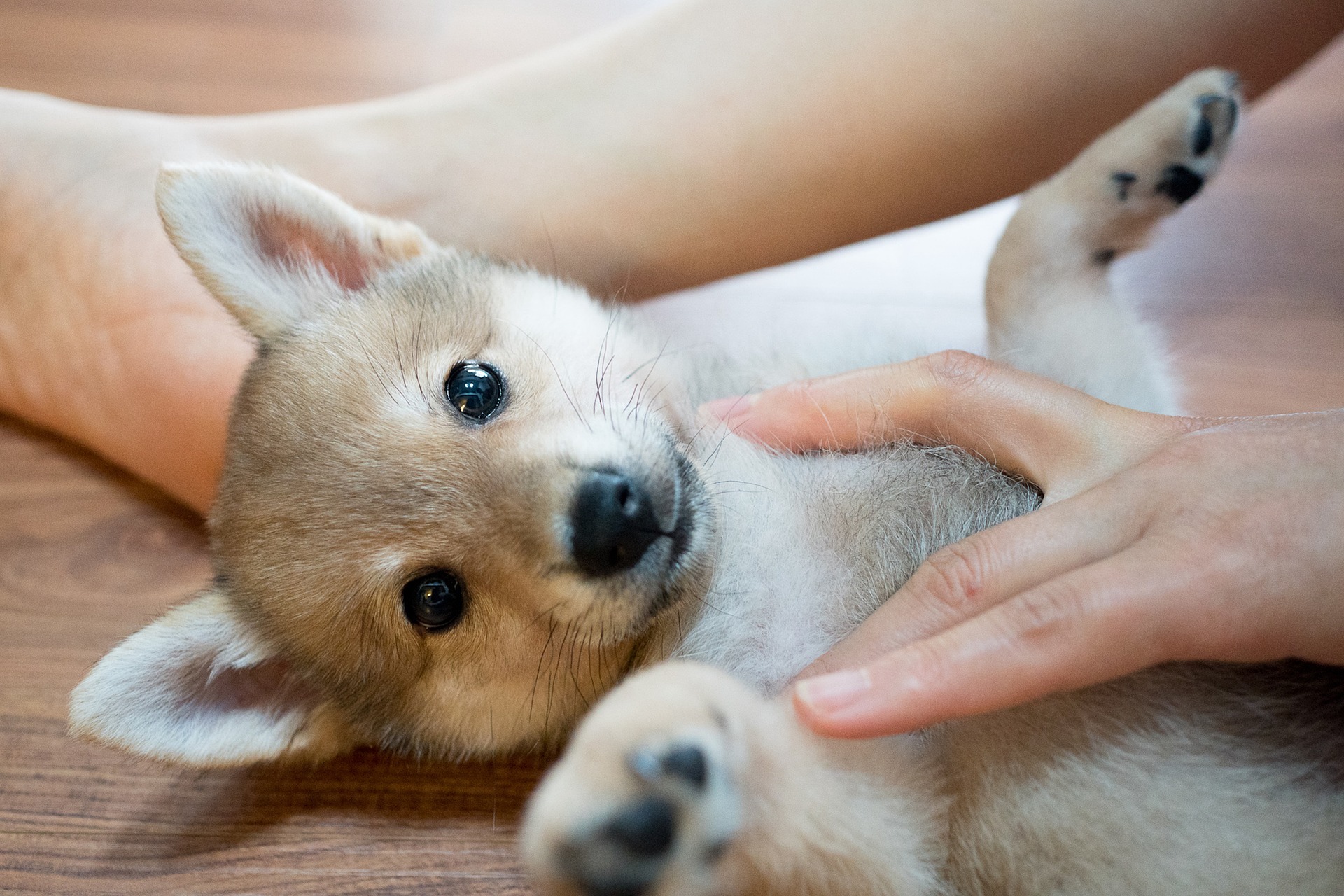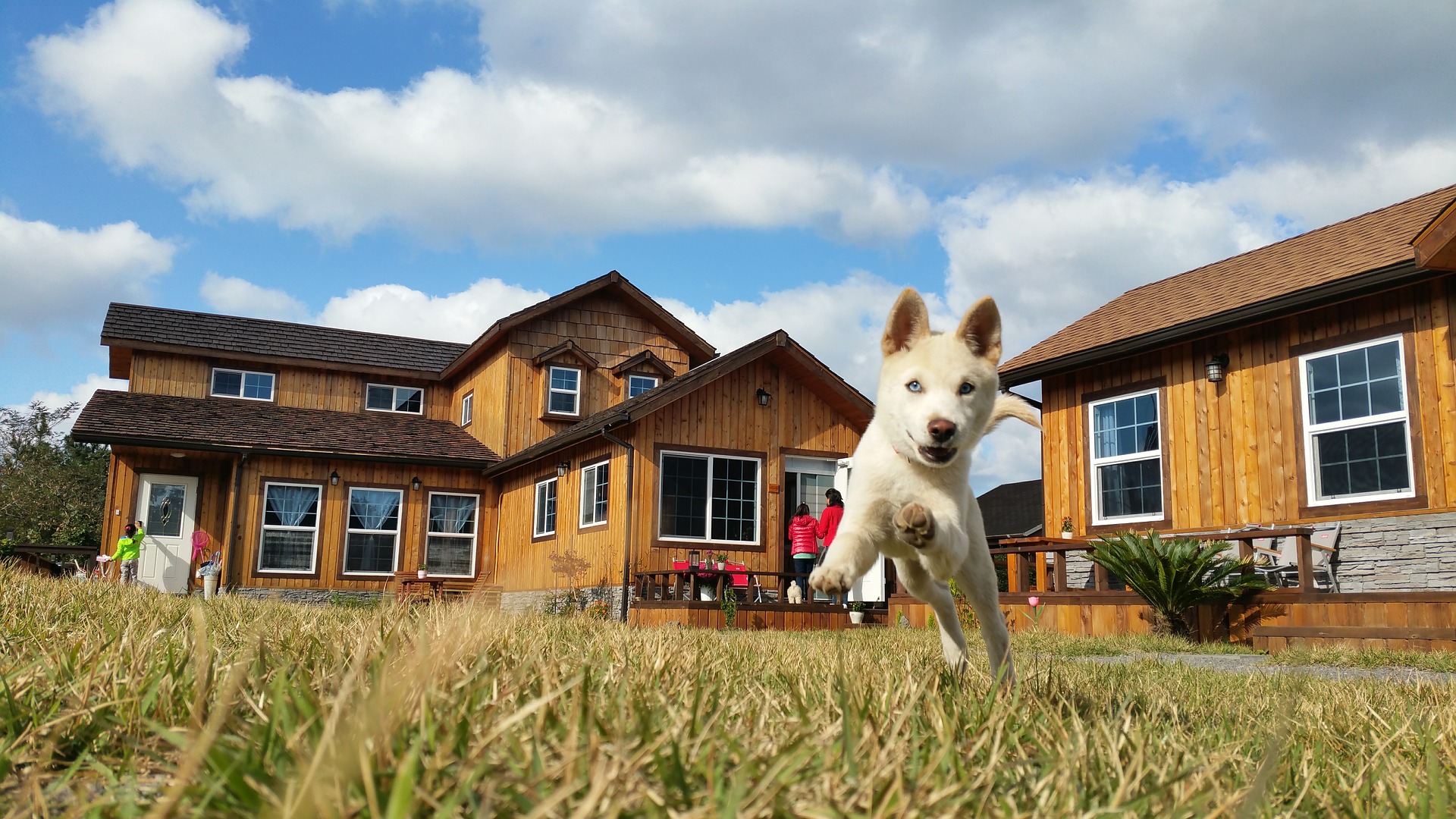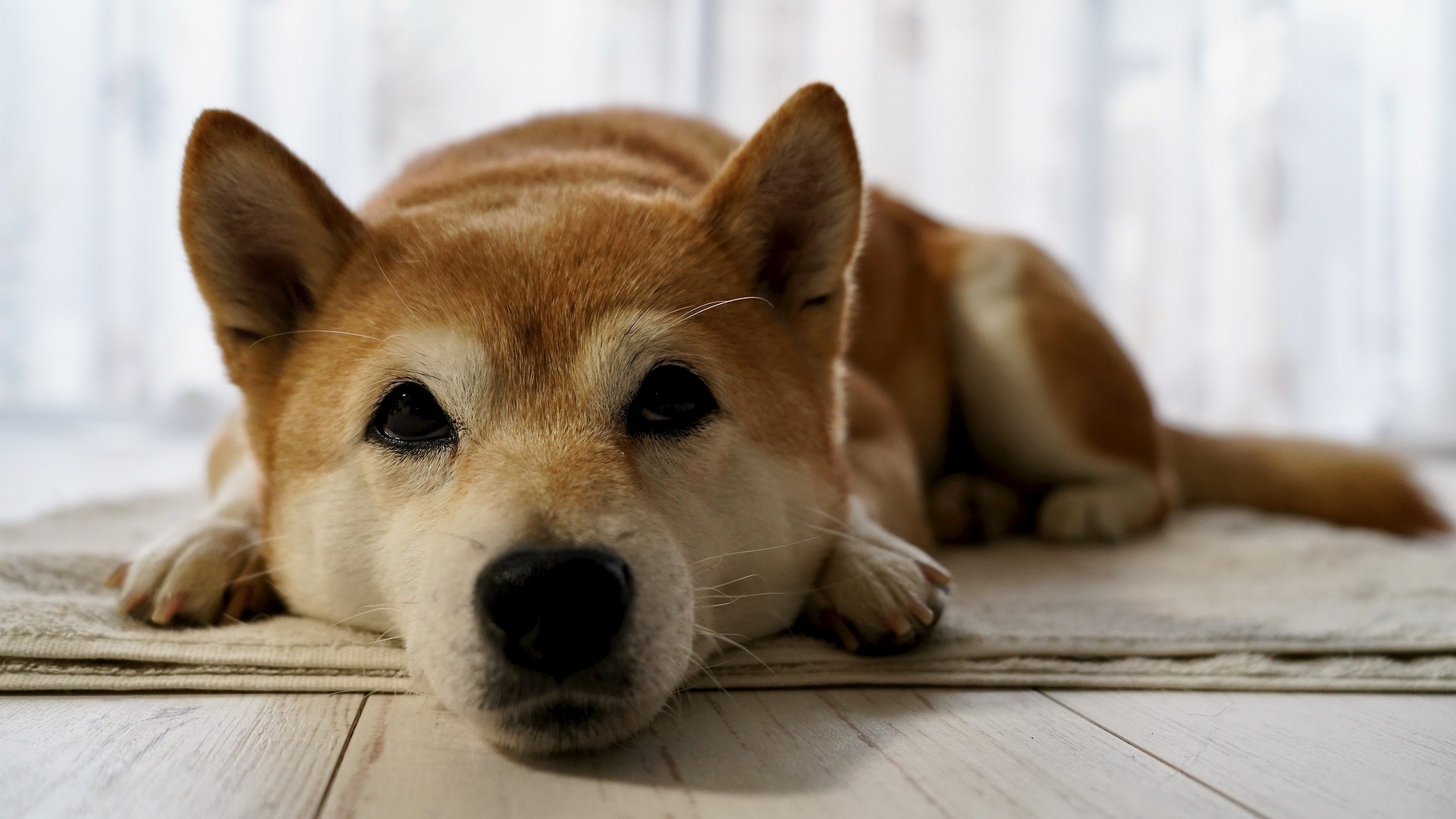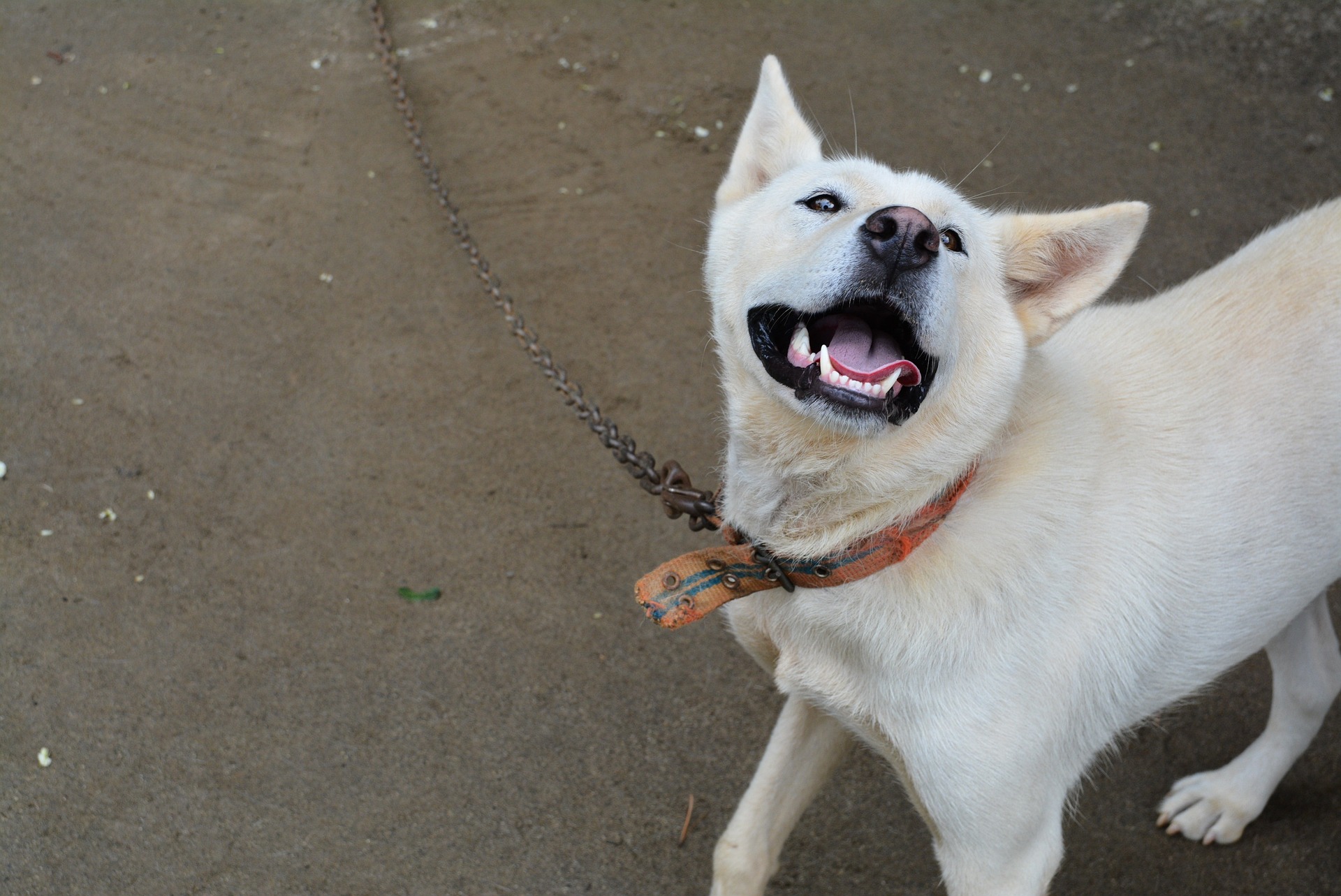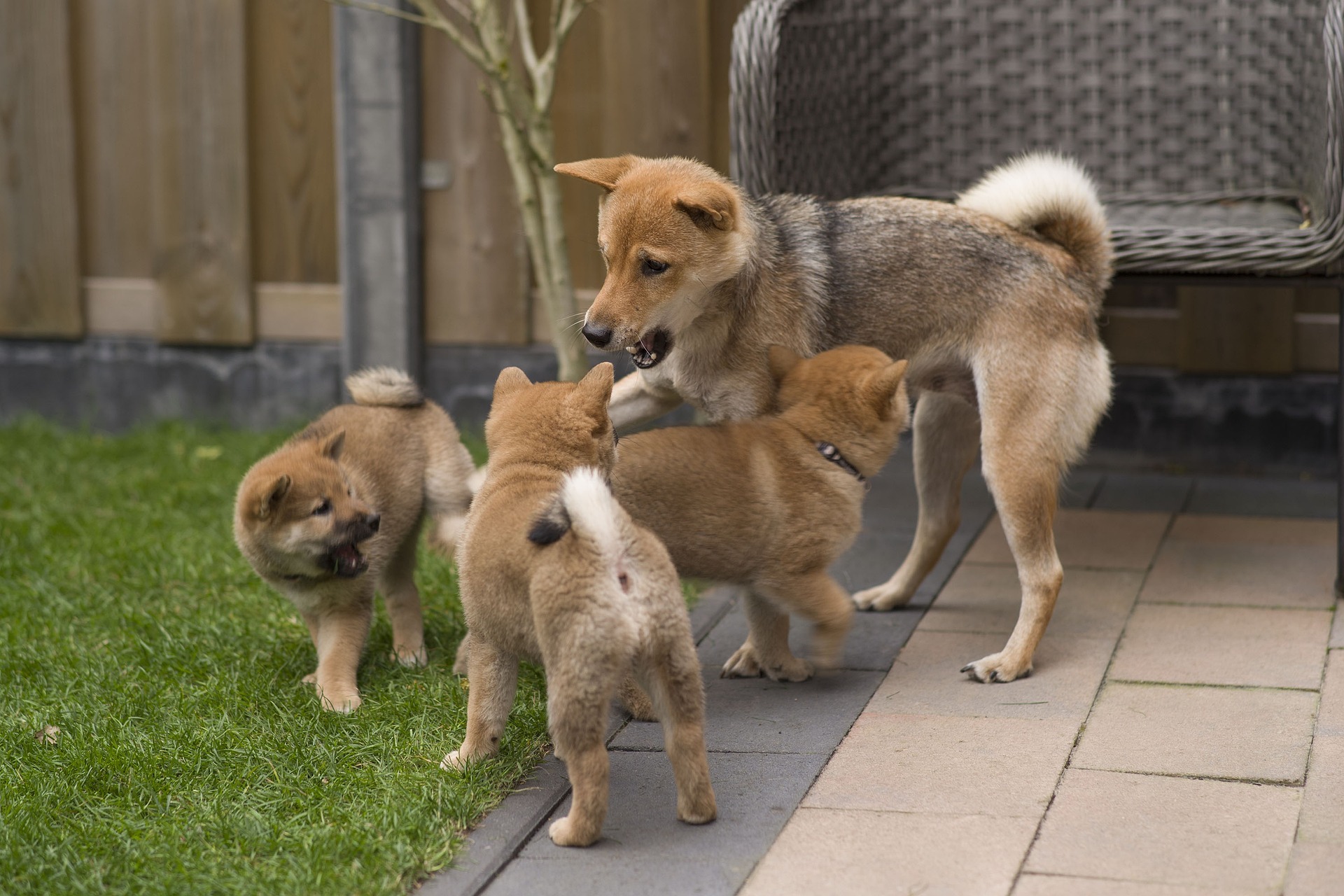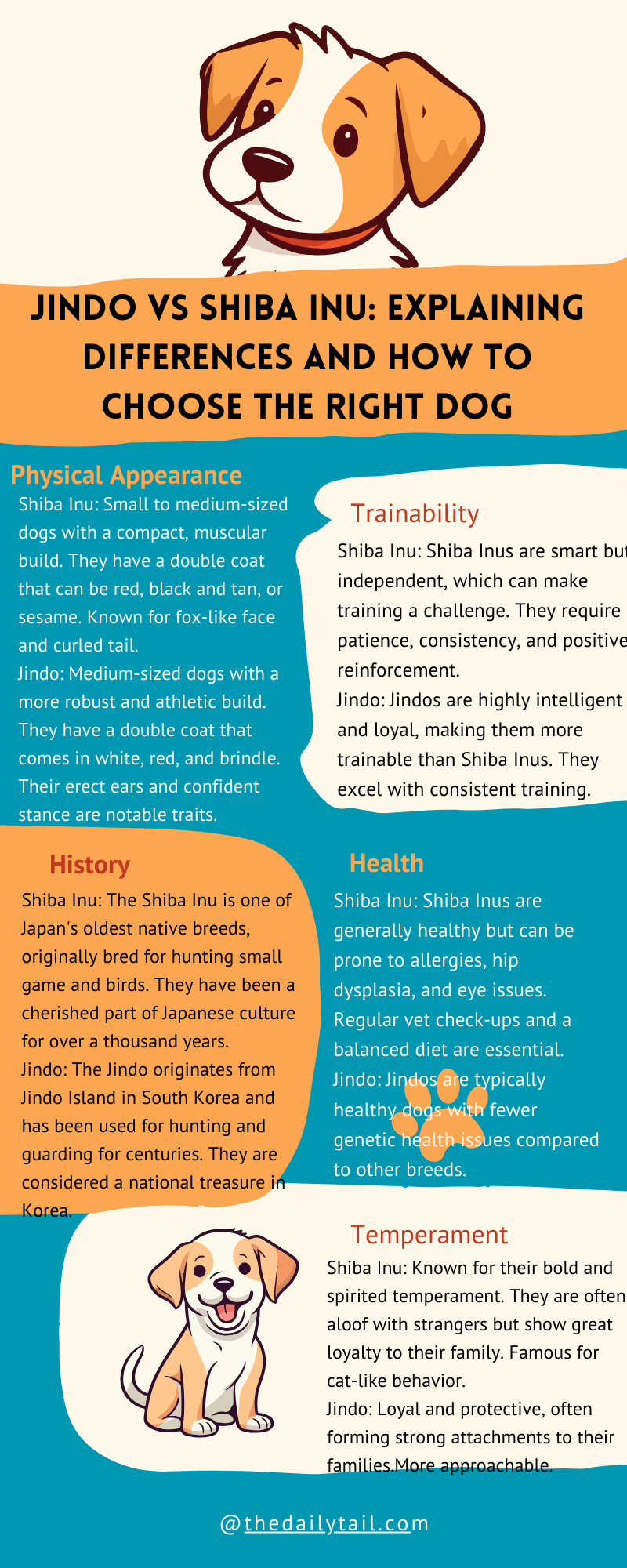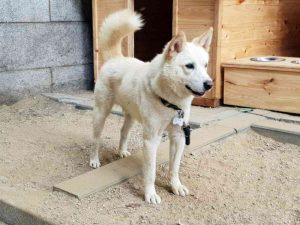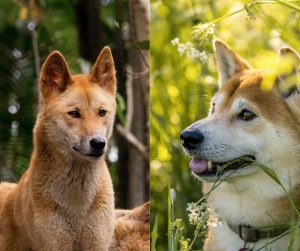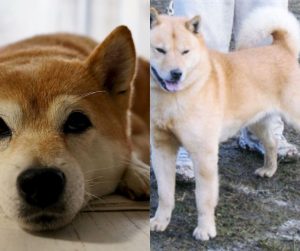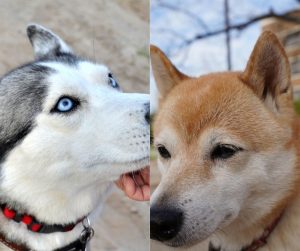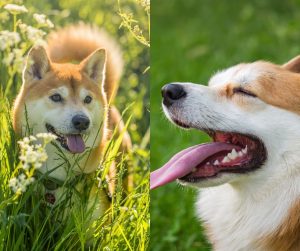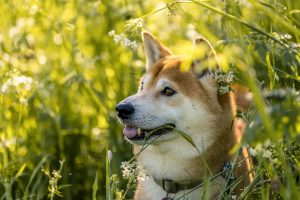The Shiba Inu and the Korean Jindo are two dog breeds that capture the heart with their fox-like appearances and strong personality traits.
Originating from Japan, the Shiba Inu is an ancient breed known for its agility and hunting prowess. These compact dogs are wrapped in a plush coat with an expressive face that radiates a mischievous intelligence.
On the flip side, the Korean Jindo hails from South Korea, embodying a legacy of unwavering loyalty and a natural aptitude for hunting and guarding. With their keen senses and athletic build, Jindos are a testament to the heritage of Korean dog breeds.
While their origins span distinct cultures, both the Shiba Inu and the Korean Jindo share the spitz family lineage, giving them certain physical similarities such as erect ears, curled tails, and a double coat to brave the elements.
However, one can discern notable differences in their build; Shiba Inus move with a confident trot, carrying a slightly more muscular frame, while Jindos showcase elegance with their taller, streamlined silhouettes.
Exploring their temperaments, both breeds exhibit independence and intelligence, yet the Shiba Inu might charm with a bit more sass, and the Jindo tends to exude a calm yet assertive demeanor.
Living with a Shiba or a Jindo is an enriching experience that requires commitment and understanding of their unique characteristics.
They are known not only for their beauty and brains but also for the bond they form with their families.
These breeds can thrive with proper socialization, training that respects their intelligence, and care that considers their athletic nature. Let’s take a deeper look into the Korean Jindo vs Shiba Inu dog breed comparison.
Key Takeaways
- The Shiba Inu and Korean Jindo are both spitz breeds with unique traits and shared lineage
- These breeds differ in build and temperament, with Shibas being smaller and sassier, and Jindos larger and more reserved
- Proper care, training, and socialization are crucial for a harmonious living experience with either breed
Origins and History
In Asia, two dog breeds stand out for their rich histories and cultural significance — the Shiba Inu from Japan and the Korean Jindo from South Korea. Each breed carries a unique past, from ancient times to their status today in their respective countries, encapsulating the essence of their ancestral roles.
Shiba Inu History
Originating from Japan, Shiba Inu dogs are famed for their ancient lineage.
- They are one of Japan’s oldest and smallest native dog breeds. Historical evidence points to their presence in Japan as far back as the Jomon period, which dates from 14,500 to 300 BCE, where they were likely used for hunting small game in the dense underbrush
- Nickname: Often referred to as “Shiba,” the name is believed to have originated from either the word for “brushwood” in reference to their hunting grounds, or for the red brushwood leaves, mirroring the breed’s most common coat color
- Cultural Significance: The Shiba Inu holds a dear place in Japanese culture, often associated with good nature, and alertness, and is cherished as a national natural treasure
In Japan, the Shiba Inu dog breed is almost on the same level of popularity as the Japanese Akita Inu. Some people think size is the only difference between the two, but there is more to that Japanese breed dogs comparison.
Jindo Dog History
The Korean Jindo dog boasts a similarly storied past. Originating from Jindo Island in South Korea, Jindos are prized for their loyalty and exceptional hunting abilities. They are recognized as South Korea’s natural treasure.
- History: The breed’s exact roots aren’t clear, but what is known is that they gained prominence for their role in hunting larger game, a trait reflected in their sleek and sturdy build compared to the Shiba Inu
- Physical Traits: Jindo dogs are generally larger and more muscular than their Japanese counterparts. Males can grow taller and heavier, making them a more formidable presence in Korea’s mountainous terrains
By exploring their histories, it becomes evident that the Shiba Inu and the Jindo have more than just geography in common; they are both respected breeds that have evolved alongside their human companions for centuries.
Physical Characteristics
When choosing between the Japanese Shiba Inu and the Korean Jindo, understanding their physical characteristics is crucial. They’re both part of the Spitz family with fox-like features, but they have their distinct traits.
Shiba Inu Appearance
The Shiba Inu carries its heritage with pride—its compact, muscular frame is topped with a remarkable double coat that comes in various colors such as red, sesame, black and tan, or cream.
This breed is identifiable by bold and confident fox-like features, which are accentuated by pricked ears, a curled tail, and a confident gaze.
Jindo Appearance
The Korean Jindo, on the other hand, exhibits a loyal presence with its own set of striking features. The Jindo also has a double coat that can appear in shades like white, fawn, grey, brindle, or black and tan.
Their appearance is well-balanced, with pointed ears and a tail that may curl over the back or be carried over in a sickle position.
Size Comparison
| Breed | Height | Weight |
|---|---|---|
| Shiba Inu | 13.5 – 16.5 inches | 17 – 23 pounds |
| Korean Jindo | 18 – 22 inches | 30 – 50 pounds |
The Japanese Shiba Inu is smaller and lighter, embodying a petite yet strong structure. The Jindo towers above with its greater height and heftier weight, showcasing a well-proportioned, athletic build.
Despite these variations, both breeds exude a confident stance that’s characteristic of Spitz-type dogs.
Jindo vs Shiba Inu Personality and Temperament
When choosing between a Korean Jindo vs Shiba Inu, one needs to understand their distinct personalities and temperaments.
Both breeds can exhibit a certain level of independence and intelligence, but they showcase these traits differently. Let’s take a closer look at each of them.
Shiba Inu Traits
The Shiba Inu is known for a spirited and playful personality, always ready for a game or an adventure.
However, they can be quite stubborn, reflecting a strong-willed nature, which may pose challenges in training.
They are fiercely loyal to their family but can be aloof with strangers, displaying a discerning attitude towards new acquaintances.
- Intelligence: Highly intelligent, but may show an independent streak
- Temperament: Typically energetic and playful, yet can be stubborn and strong-willed
- Affection: They tend to form strong bonds and show affection with their owners, although they may not always seek out cuddles
Jindo Personality
The Korean Jindo shows an incredible loyalty to their owner, often being described as a one-person dog.
Like the Shiba Inu, they are intelligent and independent, but this independence can translate into reserved behavior, especially around those they don’t know.
Jindos are also very energetic, needing a fair amount of exercise to keep happy.
- Intelligence: Smart and quick learners, Jindos can be highly trainable with consistent methodology
- Temperament: Known to be loyal and loving with their chosen people, yet they maintain a dignified reserve
- Affection: While they can be affectionate, they show it in less overt ways compared to other breeds, often preferring to be in close proximity to their owner rather than in direct contact
Health and Longevity
When it comes to our furry companions, their health and how long they can be a part of our lives is of the utmost importance.
Both the Shiba Inu and Korean Jindo are breeds well-loved for their spirited personalities, and understanding their health profiles alongside their lifespans gives us valuable insight into their care.
Life Expectancy
Shiba Inu: They are known to live a full life, often reaching up to 15 years with proper care. They paint a picture of health, bringing joy for a significant number of years.
Korean Jindo: These robust dogs typically grace their owners with their presence for about 12 to 14 years. Their zest for life is matched by their commendable longevity.
Common Health Issues
Both breeds exhibit remarkable resilience but they’re not immune to health challenges. Here’s a snapshot of what to watch for:
- Hip Dysplasia: This condition can affect both breeds, leading to discomfort and mobility issues. It’s essentially when the hip joint fails to fit together perfectly, and it’s something to keep an eye on
- Patellar Luxation: Just like it can trouble humans, a dislocated kneecap can be problematic for both the Shiba Inu and Korean Jindo, and attentive care can help manage this condition
- Hypothyroidism: Especially for the Shiba Inu puppy, this hormonal condition is something to be aware of. Regular vet check-ups can help catch and manage it early
Jindo vs Shiba Inu Training and Socialization
When they bring a Shiba Inu or Korean Jindo into their homes, pet owners are often faced with breeds that are both brilliantly intelligent and, at times, a touch headstrong.
Success in training and socialization leans heavily on understanding each breed’s distinct personality and needs.
Training Challenges
Shiba Inus are known for their intelligence. Although capable of learning quickly, they can show a stubborn streak during training sessions. This can make obedience training more of a dance of wills than a straightforward task. It’s a breed where a pet parent needs to show consistent leadership and patience. The prey drive in Shibas can be strong, so training should incorporate techniques to manage this instinct.
In contrast, Korean Jindos display high trainability. Like their Shiba Inu counterparts, they come with their set of challenges, primarily due to their independent nature. They were bred to hunt without much guidance, which is why an experienced owner who understands the nuance of training a self-reliant dog will find more success. Their energy level is substantial, and so training sessions that include physical exercise can be beneficial.
Socialization Needs
Socialization is crucial for both breeds, even from a young age, to ensure they grow comfortable around new people and animals. Shibas tend to be more aloof and may need more time to warm up to strangers, whereas Jindos can be quite protective of their family.
Both breeds show tendencies of being reserved with strangers, and it’s not uncommon for them to exhibit same-sex aggression if not properly socialized. Early socialization helps mitigate these tendencies by exposing them to various situations, environments, and individuals. For potential pet owners, this means committing to regular, controlled opportunities for their dog to interact with the world around them.
Care and Maintenance
When adopting a Shiba Inu or a Korean Jindo, prospective dog owners should understand that both breeds require a routine that combines grooming, exercise, and a well-managed diet to maintain their well-being.
Grooming Requirements
Both the Shiba Inu and Korean Jindo are known for their clean habits, but they still need regular grooming to stay in tip-top shape.
Shiba Inu:
- Shedding: These little furballs shed quite a bit, especially during seasonal changes. Brushing them a few times a week helps manage loose hair and maintain their coat’s shine
- Bathing: Shibas don’t typically love water, but they’ll need a bath every now and then to keep their coat clean
Korean Jindo:
- Shedding: Jindos also shed, particularly heavily twice a year
- Bathing: They have a similar attitude to cleanliness as Shibas and can be bathed less frequently, thanks to their self-grooming behavior
Exercise Needs
The Shiba Inu and Korean Jindo are high energy breeds—both thrive on physical activity to stay happy and healthy.
Shiba Inu:
- A Shiba will appreciate a good romp or brisk walk every day
- They can adjust to apartment living as long as they get their daily dose of exercise
Korean Jindo:
- These dogs have a tad more endurance, thanks to their hunting lineage
- Regular active play and longer walks are paramount for a Jindo’s well-being
Dietary Considerations
A balanced diet is essential for both breeds to support their active lifestyles, though the portion sizes will differ.
Shiba Inu:
- A high-quality diet with measured portions prevents weight gain, considering their smaller size
Korean Jindo:
- They need a bit more fuel in the tank. A diet similar in quality to the Shiba’s but in larger amounts supports their bigger body and higher energy needs
Living with a Shiba or Jindo
When introducing a Shiba Inu or Korean Jindo puppy into your home, understanding their distinct temperaments and needs is crucial for a harmonious living environment. Each breed brings a unique set of qualities that may mesh well with different family dynamics and housing situations.
Adjusting to Family Life
Shiba Inus and Korean Jindos are known for their loyalty and love towards their families. The Shiba Inu, often alert and spirited, may be a bit reserved at first but typically forms deep bonds with its owners. Their compact size makes them a match for families even with limited space. In contrast, Korean Jindos are celebrated for their protective nature and are excellent watchdogs. They are also well-suited for family life due to their strong loyalty, but they might be cautious with strangers.
- Shiba Inus:
- Prefer a familiar environment
- Sometimes aloof with strangers
- Tendency to be good with children they have been raised with
- Korean Jindos:
- Deeply loyal to their family
- Vigilant and tend to get along with those they consider part of their pack
Housing Considerations
When evaluating the housing needs for a Korean Jindo vs Shiba Inu, space and exercise are important factors. Shibas have an adaptable nature which can make them suitable for apartment living, provided they get regular exercise. They are a clean, quiet, and family-friendly pet. On the other hand, the Korean Jindo has a more active lifestyle and requires ample room to roam and play, making a house with a secured yard a more ideal setup for them.
- Shiba Inus:
- Can adapt well to apartment living.
- Need daily exercise to expend energy.
- Renowned for their cleanliness, almost cat-like in self-grooming.
- Korean Jindos:
- Need a secure outdoor space to satisfy their love for exploration.
- Thrive in an active lifestyle with room to run.
- Could be a challenge in an apartment setting due to their exercise requirements.
Comparing Unique Dogs
In choosing between the Shiba Inu and Korean Jindo, prospective dog owners should consider the distinctive behavioral and physical traits that each breed exhibits. These details are crucial for understanding how each breed may fit into one’s lifestyle and household.
Behavioral Differences
The Shiba Inu and Korean Jindo dog breed have notable differences in temperament. Shiba dogs are often described as independent and confident, with a tendency to be aloof with strangers. This independence means they can sometimes be seen as stubborn, requiring consistent and patient training. They have a high prey drive, which is a trait to consider if there are small animals in the household.
On the other hand, Jindo dogs are known for their loyalty and strong watchdog abilities, forming close bonds with their owners and being cautious around new people. While Jindos can also be independent, they are typically more amenable to training. Both breeds have high energy levels and require regular exercise, but the Jindo’s hunting background may drive them to roam if not properly contained.
| Breed | Prey Drive | Energy Level | Training Responsiveness | Watchdog Ability |
|---|---|---|---|---|
| Shiba Inu | High | Moderate-High | Moderate | Moderate |
| Korean Jindo | Moderate | High | High | High |
Physical Distinctions
Physically, these breeds share similarities such as their spitz-like features: erect ears, a curled tail, and a striking appearance. However, they diverge in size. Male Shiba Inus typically measure 14-17 inches in height and weigh around 22 pounds, whereas their female counterparts generally stand a bit shorter. The Korean Jindo towers over the Shiba, with a sleeker and more narrow silhouette suited for their traditional role in hunting larger game.
In terms of longevity, it’s worth noting that the Shiba Inu often enjoys a longer lifespan, averaging up to 15 years with proper care, while the Korean Jindo has a healthy range of about 12 to 14 years.
| Breed | Height (inches) | Weight (pounds) | Lifespan (years) |
|---|---|---|---|
| Shiba Inu | 13-17 | 18-22 | Up to 15 |
| Korean Jindo | Generally taller | Varies | 12-14 |
Breed Recognition and Popularity
When it comes to the Shiba Inu Japanese breed and the Korean Jindo, their journey through breed recognition and their rise or fall in popularity tells quite the story. They’re like the hidden gems of the dog world, each with a unique backstory and a steady heartbeat on the pulse of dog lovers’ interests.
Kennel Club Acknowledgements
The Shiba Inu puppy is not just a pretty face; it’s a breed that boasts acknowledgment from prestigious organizations. The American Kennel Club (AKC) recognized the Shiba Inu as a member of the Non-Sporting Group in 1992. This little dynamo is a purebred with a rich history extending back to its roots in Japan, where it shares heritage with other spitz-type dogs like the Akita, Hokkaido Inu, Kai Ken, and Kishu Inu.
On the flip side, the Korean Jindo is more of an underdog. They were officially recognized by the AKC in the Miscellaneous Class in 2008. This status is a stepping stone toward full recognition. Historically, Jindos are noted for their loyalty and originate from Jindo Island in South Korea. Although they might not have as long a registry history as some of their Mongolian cousins, they carry a purebred lineage that’s fascinating and noble.
Popularity Trends
The Shiba Inu dog has become somewhat of a celebrity. It’s one of those popular dog breeds people recognize, often from viral Internet memes.
But this pup’s popularity isn’t just about being meme-worthy; they have quietly worked their way into the hearts of families.
As far as numbers go, the Shiba Inu is often among the top 50 most popular breeds according to American Kennel Club rankings.
The Korean Jindo, however, tends to fly under the radar. While they are cherished for their unwavering loyalty in their homeland and are considered a national treasure in South Korea, their popularity in the Western world has grown more organically.
They don’t have the same renown as the Shiba Inu, but they are steadily gaining a dedicated following, especially among those who appreciate a more independent and watchful canine companion.

